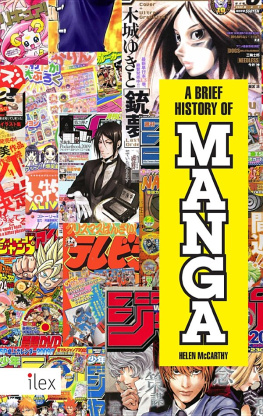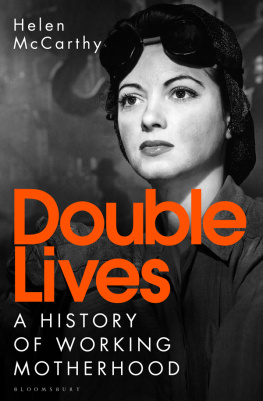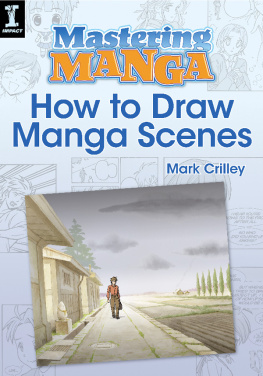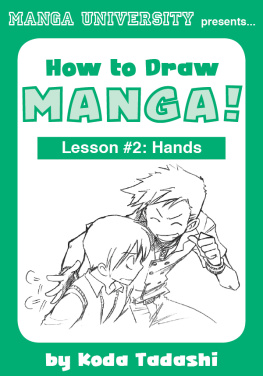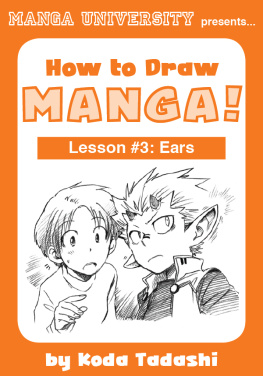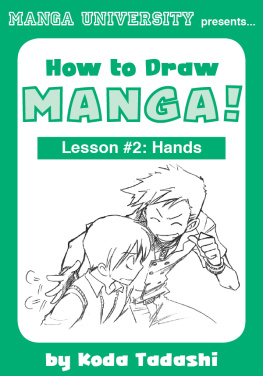Helen McCarthy - A Brief History of Manga
Here you can read online Helen McCarthy - A Brief History of Manga full text of the book (entire story) in english for free. Download pdf and epub, get meaning, cover and reviews about this ebook. year: 2014, publisher: The Ilex Press, genre: Non-fiction. Description of the work, (preface) as well as reviews are available. Best literature library LitArk.com created for fans of good reading and offers a wide selection of genres:
Romance novel
Science fiction
Adventure
Detective
Science
History
Home and family
Prose
Art
Politics
Computer
Non-fiction
Religion
Business
Children
Humor
Choose a favorite category and find really read worthwhile books. Enjoy immersion in the world of imagination, feel the emotions of the characters or learn something new for yourself, make an fascinating discovery.
- Book:A Brief History of Manga
- Author:
- Publisher:The Ilex Press
- Genre:
- Year:2014
- Rating:4 / 5
- Favourites:Add to favourites
- Your mark:
- 80
- 1
- 2
- 3
- 4
- 5
A Brief History of Manga: summary, description and annotation
We offer to read an annotation, description, summary or preface (depends on what the author of the book "A Brief History of Manga" wrote himself). If you haven't found the necessary information about the book — write in the comments, we will try to find it.
A Brief History of Manga — read online for free the complete book (whole text) full work
Below is the text of the book, divided by pages. System saving the place of the last page read, allows you to conveniently read the book "A Brief History of Manga" online for free, without having to search again every time where you left off. Put a bookmark, and you can go to the page where you finished reading at any time.
Font size:
Interval:
Bookmark:


MangaJapanese comicsare now ubiquitous, but how much do you actually know about the innovators, artists, writers and publishers of some of the most beloved comics in the world?
A Brief History of Manga is the only concise volume of its kind to provide a snapshot of the past 150 years of this sequential art form. Lavishly illustrated, and stuffed with facts, figures and anecdotes on key mangafrom Akira to Mazinger Zand the creators behind them, the book boasts a unique quick reference timeline running throughout, with publication dates, important historical events and the births and deaths of the biggest names in manga art.
Written by one of the Wests most renowned and respected anime and manga experts, A Brief History of Manga is an authoritative and essential guidea crash course on the worlds most prevalent and popular art form.
Theres a lot of debate about where the history of manga actually begins. The earliest Japanese cartoons found so far are some very rude caricatures drawn on ceiling beams by a group of workmen rebuilding the Horyu-ji temple in Nara around the year 700 CE. The workmen were just letting off steam about their bosses, not trying to create a new art form. Their doodles were covered by new ceiling boards and remained unseen until the roof was renovated over 1,200 years later, in the 1930sprobably the longest pre-publication delay of any comic.
Four hundred years later, in the 1100s, a high-ranking Buddhist priest named Toba Sojo produced a series of cartoons on scrolls, showing anthropomorphized frogs, monkeys, rats, and other animals aping human activity, to satirize less devout priests. The pictures were used for religious teaching, but were so popular that any comical pictures sold to the public became known as Toba-e, Toba pictures.
Japans urban middle classes had money and wanted to be amused. Cartoons, puzzle pictures, and satirical images sold just as well as the more artistic ukiyo-e prints of famous beauties, landscapes, or actors, and by the late 1700s, popular illustrated books featuring romances, horror stories, and action-adventures were widely available.
Scholar Adam Kern places the first use of the term manga in 1798, in the work of poet/writer/artist Santo Kyoden. In 1814 Aikawa Minwa published Manga Hyakujo (100 Girl Cartoons) and Katsushika Hokusai began to publish his collected sketchbooks, Hokusai Manga. But manga, as we understand the term todayideas expressed through narrative drawings and in-frame dialoguedidnt exist yet. Even the idea of manga as satirical caricature was still only half-formed.

Santo Kyoden.

From Manga Hyakujo.
MEANING OF MANGA
The first character of the word manga is often interpreted as irresponsible or inconsequential, so the word is frequently translated as irresponsible pictures. In 1989, comics creator Shotaro Ishinomori wanted to change the image of manga as cheap disposable entertainment, by changing the meaning of the word. He proposed replacing the first character with another, also pronounced man, meaning a huge number. He saw manga as million pictures, pictures with infinite possibilities, but the historic version was too entrenched and his idea wasnt taken up.

From Aikawa Minwas Manga Hyakujo.

Six years after the United States forced Japan to open her borders to visitors and trade after 250 years of isolation, British expatriate Charles Wirgman arrived in Yokohama. He was 30, an accredited foreign correspondent and sketch artist for the Illustrated London News. He started up several other business ventures, including a photo-graphic studio, English tuition, art classes, and a satirical magazine called Japan Punch.
Modeled on the London magazine Punch, it was a gossipy account of current events, with cartoons. Although aimed at Japans growing foreign community, it soon acquired Japanese readers, and was sold across Asia for 25 years.
Wirgmans quirky British humor and open references to real events and people were something new. British satire began to be imitated by Japanese artists, inspiring the first true political cartoons to appear in Japan. By 1868, prints commenting on the Government, businessmen, and public figures were known as ponchi-e, or Punch pictures.
Wirgman was regarded by Japanese pupils and colleagues as their mentor in Western fine art and cartooning techniques. He is the forefather of both manga and Western-style Japanese art, and the artist who introduced word balloons to Japanese comics.
Among his famous pupils were leading Western-style artists Kiyochika Kobayashi and Yoshimatsu Goseda. He also briefly taught English to one of modern Japans heroes, the future Admiral Togo. Wirgman is buried in the Foreign Cemetery at Yokohama, where a ceremony honoring his memory is held at his grave every year.

Portrait of Charles Wirgman from the Illustrated London News, based on a painting by his brother Theodore Blake Wirgman.
Japan Punch and Toba-E.

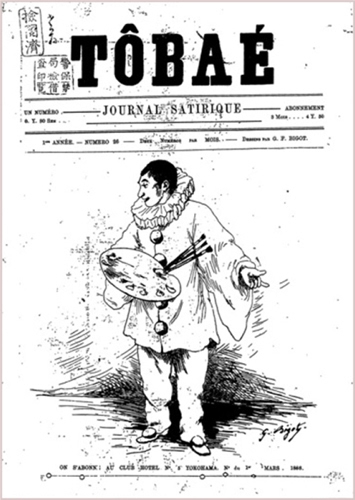
THE FRENCH CONNECTION
Where Charles Wirgman led, other expats followed, notably the Frenchman Georges Bigot. He arrived in Yokohama in 1882, working as an illustrator and teacher of Western watercolor painting before founding his own satirical magazine in French and Japanese in 1887. Toba-e was named in honor of Toba Sojos animal scrolls. It lasted only three years, but Bigots arrangement of panels in narrative sequence was very influential. He returned to France in 1899.

Georges Bigot poses in samurai garb. He married (and later divorced) a Japanese woman.

Eshinbun Nipponchi, Japans first cartoon magazine, began publication in 1874. Creators Robun Kanagaki and Kyosuke Kawanabe modeled it on Wirgmans
Next pageFont size:
Interval:
Bookmark:
Similar books «A Brief History of Manga»
Look at similar books to A Brief History of Manga. We have selected literature similar in name and meaning in the hope of providing readers with more options to find new, interesting, not yet read works.
Discussion, reviews of the book A Brief History of Manga and just readers' own opinions. Leave your comments, write what you think about the work, its meaning or the main characters. Specify what exactly you liked and what you didn't like, and why you think so.

